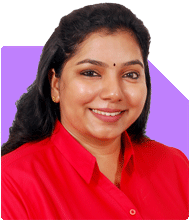Ramalingam Kalirajan |6804 Answers |Ask -Follow
Mutual Funds, Financial Planning Expert - Answered on Jun 16, 2024
He has an MBA in finance from the University of Madras and is a certified financial planner.
He is the director and chief financial planner at Holistic Investment, a Chennai-based firm that offers financial planning and wealth management advice.... more

Hi Sir, I'm 29yrs old M, unmarried with no loans presently. I have a monthly SIP of 40k which is spilt between index funds, multicap funds, commodities fund. I have also been investing in SGB every year for diversification, PPF for fixed income component (and for 80C) and NPS of 50k/year for 80CCD. I want to invest a lumpsum amount of 4L in mutual funds or any other alternative but a bit sceptical given the markets high. Can you please advise where and when shall I invest the Corpus amount with time frame of 5-6 years. Thanks in advance!
First, let's review your current investment strategy, which is impressive for someone at your age. You have diversified your portfolio across various asset classes, showcasing your understanding of investment principles. Investing Rs. 40,000 monthly through SIPs in index funds, multi-cap funds, and commodity funds is commendable. Additionally, investing in Sovereign Gold Bonds (SGB), Public Provident Fund (PPF), and National Pension System (NPS) for tax benefits under Section 80C and 80CCD indicates a thoughtful approach towards diversification and tax efficiency.
SIP Investments
Your monthly SIP of Rs. 40,000 is strategically split among index funds, multi-cap funds, and commodity funds. While index funds offer low-cost exposure to broad market indices, they come with certain limitations. Index funds strictly track a market index, which might underperform in volatile or declining markets due to their passive nature. The lack of flexibility to adapt to market conditions is a significant disadvantage.
The Case for Actively Managed Funds
Actively managed funds, on the other hand, provide flexibility and the potential for higher returns. Fund managers can adjust the portfolio based on market conditions, economic indicators, and specific stock performance. This proactive management can help mitigate risks and capitalize on market opportunities. Given the current high market conditions, actively managed funds might better navigate potential volatility, aiming to deliver superior returns.
Multi-Cap and Commodity Funds
Multi-cap funds are an excellent choice as they invest across large-cap, mid-cap, and small-cap stocks, offering diversification and growth potential. Commodity funds add another layer of diversification, reducing the overall risk of your portfolio by spreading investments across different asset classes.
Fixed Income and Tax-Efficient Investments
Your investments in SGBs and PPF provide stability and tax benefits. SGBs offer the dual advantage of capital appreciation and annual interest, making them a valuable addition to your portfolio. PPF is a reliable fixed-income instrument, providing a tax-free return and contributing to the fixed-income component of your portfolio. NPS is another wise choice, offering tax benefits and serving as a long-term retirement planning tool.
Lumpsum Investment Strategy
Now, let's discuss the lumpsum amount of Rs. 4 lakh you intend to invest. Given your time frame of 5-6 years and the current high market levels, it is understandable to feel cautious about a lumpsum investment. Timing the market perfectly is challenging, and it is essential to balance potential risks and rewards.
Benefits of Phased Investments
Consider a systematic transfer plan (STP) instead of a lumpsum investment. An STP allows you to invest your lumpsum amount in a liquid or ultra-short-term debt fund and gradually transfer a fixed amount to equity mutual funds over a period. This strategy reduces the risk of entering the market at a high point and helps average out the purchase cost.
Selecting Suitable Mutual Funds
When selecting mutual funds for your lumpsum investment, focus on those managed by experienced fund managers with a proven track record. Diversify across different categories, such as large-cap, mid-cap, and multi-cap funds, to balance growth potential and risk. Look for funds with consistent performance, low expense ratios, and a robust investment process.
Considering Market Cycles
Given the high market levels, it is essential to be cautious and patient. Equity markets are cyclical, and corrections are inevitable. By opting for a phased investment approach through STP, you can mitigate the impact of market fluctuations and invest more confidently.
Additional Diversification Strategies
International Equity Funds
Consider diversifying your portfolio further by including international equity funds. These funds invest in global markets, providing exposure to international companies and economies. This diversification can reduce country-specific risks and offer opportunities in markets that may perform differently from the Indian market.
Sector-Specific Funds
Sector-specific funds can be another option, focusing on industries expected to grow in the coming years. Technology, healthcare, and renewable energy sectors have shown significant potential. However, these funds carry higher risks due to their concentrated exposure, so limit their allocation within your portfolio.
Hybrid Funds
Hybrid funds, which invest in both equity and debt instruments, can offer a balanced approach. They provide growth potential through equity exposure while mitigating risks with debt investments. These funds can be suitable for your medium-term goals, offering a blend of stability and growth.
Reviewing and Rebalancing Your Portfolio
Regularly review and rebalance your portfolio to align with your financial goals and market conditions. A Certified Financial Planner can assist in evaluating your investments, suggesting adjustments, and ensuring your portfolio remains on track.
Importance of Asset Allocation
Proper asset allocation is crucial for achieving your financial goals. It involves spreading investments across different asset classes to balance risk and return. Regular rebalancing ensures that your portfolio remains aligned with your desired asset allocation, especially during market fluctuations.
Monitoring Fund Performance
Keep an eye on the performance of your mutual funds. Compare their returns against benchmark indices and peer funds. Consistently underperforming funds should be reviewed and potentially replaced with better-performing options.
Tax-Efficient Investing
Tax-efficient investing is essential to maximize your returns. Utilize tax-saving instruments like ELSS (Equity-Linked Savings Scheme) for additional 80C benefits. Plan your investments to minimize tax liabilities and enhance your overall returns.
Avoiding Common Investment Mistakes
Emotional Investing
Avoid making investment decisions based on emotions, such as fear or greed. Emotional investing can lead to impulsive actions and potential losses. Stick to your investment plan and make decisions based on thorough analysis and long-term goals.
Chasing Past Performance
Do not chase funds solely based on their past performance. Historical returns do not guarantee future performance. Focus on the fund's investment strategy, fund manager's expertise, and consistency over time.
Over-Diversification
While diversification is essential, over-diversification can dilute your returns. Investing in too many funds can lead to overlapping investments and complicate portfolio management. Strike a balance between diversification and concentration.
Understanding the Benefits of Professional Guidance
Certified Financial Planner Expertise
Engaging a Certified Financial Planner (CFP) can provide valuable insights and personalized advice. A CFP can help you create a comprehensive financial plan, considering your goals, risk tolerance, and time horizon. They can also assist in selecting suitable investment options, monitoring performance, and making necessary adjustments.
Customized Financial Planning
A CFP can help you develop a customized financial plan tailored to your specific needs. They can guide you in setting realistic goals, creating a budget, managing debt, and planning for major life events like marriage, buying a home, or retirement.
Risk Management
A CFP can assist in identifying and managing risks associated with your investments. They can recommend appropriate insurance coverage, asset protection strategies, and contingency plans to safeguard your financial future.
The Importance of Financial Discipline
Regular Savings and Investments
Consistently saving and investing a portion of your income is crucial for building wealth. Automate your investments through SIPs to ensure regular contributions and benefit from the power of compounding.
Emergency Fund
Maintain an emergency fund equivalent to 6-12 months of living expenses. This fund provides a financial cushion during unexpected situations, preventing the need to liquidate long-term investments prematurely.
Debt Management
While you currently have no loans, it is essential to manage debt wisely in the future. Avoid high-interest loans and prioritize repaying existing debts before making new investments.
Final Insights
Your current investment strategy is commendable and reflects a sound understanding of diversification and tax planning. To invest your lumpsum amount of Rs. 4 lakh, consider a phased approach through a systematic transfer plan (STP) to mitigate market risks. Focus on actively managed funds with a proven track record, diversify across different categories, and explore additional options like international equity and sector-specific funds.
Regularly review and rebalance your portfolio to ensure it aligns with your financial goals and market conditions. Engage a Certified Financial Planner for personalized advice, risk management, and comprehensive financial planning. Maintain financial discipline by consistently saving and investing, building an emergency fund, and managing debt wisely.
Your proactive approach and thoughtful investments are commendable. By making informed decisions and seeking professional guidance, you are well on your way to achieving your financial goals.
Best Regards,
K. Ramalingam, MBA, CFP,
Chief Financial Planner,
www.holisticinvestment.in
You may like to see similar questions and answers below
Ramalingam Kalirajan |6804 Answers |Ask -Follow
Mutual Funds, Financial Planning Expert - Answered on May 31, 2024
Sanjeev Govila | Answer |Ask -Follow
Financial Planner - Answered on Oct 12, 2023
Ramalingam Kalirajan |6804 Answers |Ask -Follow
Mutual Funds, Financial Planning Expert - Answered on Jun 25, 2024
Ramalingam Kalirajan |6804 Answers |Ask -Follow
Mutual Funds, Financial Planning Expert - Answered on Jul 22, 2024
Pushpa R |21 Answers |Ask -Follow
Yoga, Mindfulness Expert - Answered on Oct 25, 2024
Nayagam P P |3856 Answers |Ask -Follow
Career Counsellor - Answered on Oct 25, 2024
Nayagam P P |3856 Answers |Ask -Follow
Career Counsellor - Answered on Oct 25, 2024
Dr Chandrakant Lahariya |93 Answers |Ask -Follow
Diabetologist, Consultant Physician, Vaccine Expert - Answered on Oct 25, 2024
Dr Chandrakant Lahariya |93 Answers |Ask -Follow
Diabetologist, Consultant Physician, Vaccine Expert - Answered on Oct 25, 2024
Nitin Narkhede |28 Answers |Ask -Follow
MF, PF Expert - Answered on Oct 25, 2024
Nayagam P P |3856 Answers |Ask -Follow
Career Counsellor - Answered on Oct 25, 2024
Nayagam P P |3856 Answers |Ask -Follow
Career Counsellor - Answered on Oct 25, 2024
Nayagam P P |3856 Answers |Ask -Follow
Career Counsellor - Answered on Oct 25, 2024
Nayagam P P |3856 Answers |Ask -Follow
Career Counsellor - Answered on Oct 25, 2024

























